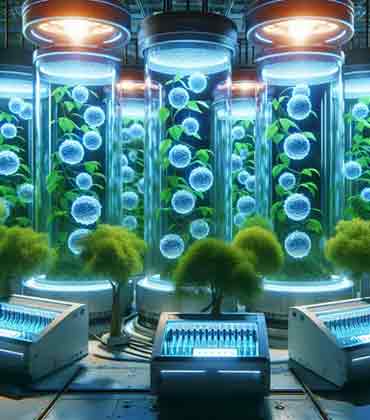THANK YOU FOR SUBSCRIBING
By Guillaume Couture, Quality Director at Kerry Inc.
Guillaume Couture: Safeguarding Quality and Safety in the...
By Juan F. DeVillena, Sr. Vice President of Quality Assurance and Food Safety at Wayne-Sanderson Farms
The Micro Revolution In the U.S.
By Mauricio Jaramillo, Food Service Director, SAGE Dining Services
Upskilling, the Key to Addressing the Emerging Challenges...

Listeria Control in a Ready to Eat (RTE) Environments
Michelle Brydalski, Vice President, Food Safety, Quality Assurance, Charcuterie Artisans

 Michelle Brydalski, Vice President, Food Safety, Quality Assurance, Charcuterie Artisans
Michelle Brydalski, Vice President, Food Safety, Quality Assurance, Charcuterie ArtisansListeria monocytogenes (LM) continues to affect the food industry, in particular the meat and poultry industry. According to the US Centers for Disease Control and Prevention (CDC), about 1600 people in this country get listeriosis each year, and approximately 260 die, impacting the most vulnerable portion of our population, including pregnant women, children, the elderly, and those with compromised immune systems. Food manufacturers are responsible for the development and execution of robust listeria controls, yet foodborne illness outbreaks and recalls due to LM continue to make headlines and erode consumer confidence in the safety of the products made. Fortunately, strides have been made in detection, control, and general understanding of how to manage and mitigate it within the food manufacturing environment.
In order to control and mitigate the risk LM presents, a deep understanding of the pathogen you are dealing with is needed. To mitigate LM, you need to understand how it behaves and reacts in a food manufacturing environment. It is ubiquitous, it thrives in cool, damp environments, survives freezing and drying, is salt tolerant, attaches to various surfaces to form difficult-to-remove biofilms, can establish niche or harborage sites, and is extremely versatile in adapting to and surviving all kinds of disinfection processes. On a positive note, LM is a poor competitor and can potentially be controlled and or eliminated using various competitive inhibition techniques, leading to a decrease in its growth and persistence.
One thing is for certain: complacency is not an option. It is also not enough for a food manufacturer to evaluate what is in their direct control but must consider the entire supply chain. Risk can reside at the raw material supplier through finished product distribution. It is also important to note that each day is a new point in time when it comes to LM control. Activities you deployed to mitigate your LM risk yesterday do not control your risk today. This is why it is critical to take a multi-pronged approach to LM management and control. Several steps should be taken to control this hardy pathogen, including:
1. Good Manufacturing Practices (GMPs) that include robust personnel hygiene and sanitary operation controls.
2. Sanitation Programs with clearly defined Master Sanitation Schedules (MSS), detailed and validated Sanitation Standard Operating Procedures (SSOPs), and daily housekeeping programs.
3. Hygienic Design and Controls of Facility and Equipment.
4. Employee Training on GMPs, sanitation, and food safety.
5. Pathogen Environmental Monitoring Program with a comprehensive sampling program for surfaces and equipment including zone identification, unplanned event management, positive finding management and corrective action including vectoring, hold and release protocols for impacted products, and mapping. Your program should be developed with a “Seek and Destroy” approach.
6. Supplier Management Programs, including sourcing from reputable suppliers and deploying measures to verify the safety of incoming raw materials.
7. Temperature Control Programs ensure proper temperatures are maintained during storage and processing to inhibit the growth of LM.
8. Documentation and Record Keeping ensure that regular reviews occur and procedures are updated based on new information or incidents.
Intervention strategies are also a key component of a successful LM management strategy, with floor management being a critical element of a comprehensive program. Some industry best practices include:
• Floor sanitizing techniques use foaming units, sanitizing foot baths, granular quaternary ammonia, or peroxyacetic acid.
• Caustic cleaner and high-concentration sanitizer are used.
• Double sanitizing (high ppm, rinse, then low ppm).
• Footwear controls like boot covers or captive show programs.
It is worth noting that when it comes to floors or any equipment, water is the enemy. This can include standing water or condensation. Ensuring that your entire RTE area is completely dry before production begins and maintaining that way throughout production is essential.
New and innovative intervention strategies are being developed and deployed regularly, and food industry professionals need to have a healthy sense of curiosity to explore what is coming down the pipeline. Things like biofilm indicating gels, ozone use, UV use, antimicrobial equipment, phage, rapid detection technology, and hydrogen peroxide disinfection technology are all great examples of tools that can help the food industry in the fight against LM survival in RTE environments and reduce the likelihood they will make it to your finished goods.
By implementing these measures, food manufacturers can significantly reduce the risk of LM contamination in RTE foods and ultimately enhance the safety of their products.
Read Also















